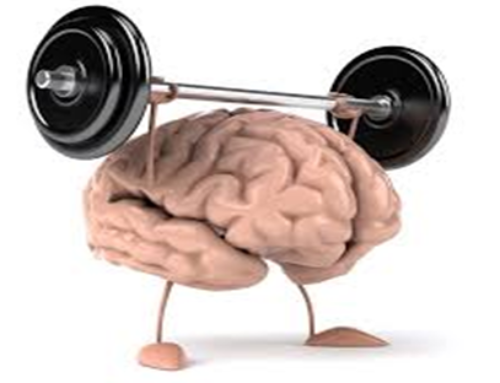Sitting is as bad for your health as smoking. That’s the bold new statement being made by the latest research into the effects of sedentary behaviour. This is not just spin in action – this is now the mainstream view of population health experts around the world. For example, you know something has reached a point of critical importance when it gets national prime time coverage, and a recent 60 Minutes story on this topic opens with this exact claim – that sitting is as bad for your health as smoking.
 But how can this possibly be? What does sitting do that could be as bad as filling your lungs with carcinogenic smoke and tar?
But how can this possibly be? What does sitting do that could be as bad as filling your lungs with carcinogenic smoke and tar?
Let’s start by defining sedentary behaviour, within which sitting is included. At complete rest the rate at which we burn energy is called the Basal Metabolic Rate and is assigned an arbitrary measure of 1.0 MET (Metabolic Equivalent of Task). Sedentary activity is anything using 1.0-1.5 METs (1-1.5 times our basal metabolic rate of energy consumption). By comparison, light walking uses 2.5 METs and vigorous exercise uses 7-8+ METs.
Now, let’s cover the statistics:
- Many people now spend more time sitting than they do sleeping. Both are sedentary (close to 1.0 METs) but sleeping involves important physiological processes important for health that are not present while awake.
- In a study of 200,000 people over 3 years (statistically strong) they found those sitting for 11hrs+/day had 40% increased risk of early death (death before life expectancy age) compared to those sitting for 4 hours or less.
- The difference between the two ends of the scale in that study is significant. However another study compared adults who spent < 2 hours a day in front of the TV and those who spent 4 or more hours in front of the TV. Even with this much smaller differentiation between the ends of the spectrum the study revealed that those with greater screen time had:
– 50% increased risk of early death from any cause
– 125% increased risk of events associated with cardiovascular disease, such as chest pain (angina) or heart attack - People in desk jobs have twice (2x) the rate of heart disease than people with active jobs.
- A summary of various other studies has linked habitual sedentary behaviour with a greater incidence of diabetes, brain blood clots (i.e. potential stroke), and cancer, particularly colon and breast cancer. Bottom line – increased risk of early death. The combination of these risks is about as strong as those associated with smoking.
Pretty scary right? Now for the how and why? The physiological explanation: When we sit or are sedentary, there is a loss of muscular contractile stimulation which we would otherwise get, even from just standing still against gravity. This leads to:
- Suppression of muscle lipoprotein lipase activity, an enzyme which is necessary for triglyceride uptake by cells (i.e. fat burning) and high-density lipoprotein (“good”) cholesterol production, by up to 90%! (Bey & Hamilton, 2003);
- Suppression of effective blood glucose regulation (Hamilton, et al., 2004).
As it turns out, regular “switching on” of these processes is vitally important to normal body maintenance, management/reduction of inflammatory factors and disease prevention. As one research paper put it:
“It seems likely that there is a unique physiology of sedentary time, within which biological processes that are distinct from traditionally understood exercise physiology are operating.” (Owen, et al., 2010)
This also sheds some light on a couple of additional observations which have come from research into sitting:
- Too much sitting is statistically distinct from too little exercise. This is the “Active Couch Potato” phenomenon: adults can meet public health guidelines on physical activity, but if they sit for prolonged periods, their metabolic health is still compromised (Owen, et al., 2010).
- Breaks in sedentary time (as distinct from the overall volume of time spent being sedentary) were shown to have beneficial associations with metabolic biomarkers (Healy, et al., 2008). That is, independent of total time in sedentary activity, total time in moderate-vigorous intensity activity, and the average intensity of this activity, a higher number of breaks in sedentary time was beneficially associated with waist circumference, body mass index, triglycerides, and 2 hour plasma glucose.
So, what can you do if simply hitting the gym doesn’t fully address the risk of chronic disease associated with prolonged sedentary activities in between gym visits? The answer is taking every chance to introduce “incidental” (low intensity) exercise into your day. This could include:
- Standing/walking while talking on the phone or eating lunch.
- Using a standing desk
- Taking the long way to photocopiers and toilets when at work
- Periodically standing up from your desk and moving all joints lightly (e.g. via stretching) or walking a lap of the office
- Walking meetings
WANT TO DO SOMETHING ABOUT THIS AT YOUR WORKPLACE? Ask your boss to get in contact with Conan’s affiliated corporate wellness offering: the Workplace Warriors Program. A central part of this program is the injection of regular movement into the working day, which has the added benefit of enhancing your performance. Contact luke.dimasi@warriorwellness.com.au or 0402 128 725.
Works Cited
Bey, L. & Hamilton, M. T., 2003. Suppression of skeletal muscle lipoprotein lipase activity during physical inactivity: A molecular reason to maintain daily low-intensity activity. J. Physiol., Volume 551 (Pt 2), pp. 673-82.
Hamilton, M. T., Hamilton, D. G. & Zderic, T. W., 2004. Exercise physiology versus inactivity physiology: An essential concept for understanding lipoprotein lipase regulation. Exerc. Sport Sci. Rev., 32(4), pp. 161-6.
Healy, G. N., Dunstan, D. W. & Salmon, J., 2008. Breaks in sedentary time: Beneficial associations with metabolic risk.. Diabetes Care, 31(4), pp. 661-6.
Owen, N., Healy, G. N., Matthews, C. & Dunstan, D. W., 2010. Too Much Sitting: The Population Health Science of Sedentary Behavior. Exerc. Sport Sci. Rev., 38(3), pp. 105-113.





